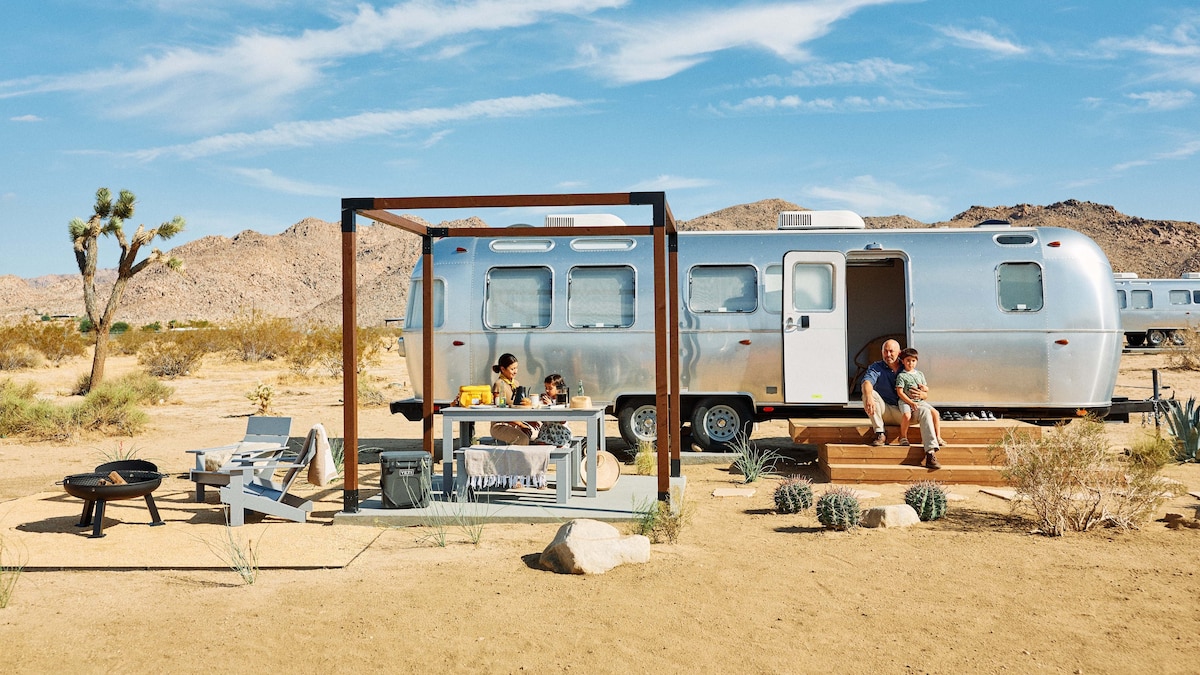Now Reading: Top Stays in Joshua Tree: Camping, Glamping, and More
-
01
Top Stays in Joshua Tree: Camping, Glamping, and More
Top Stays in Joshua Tree: Camping, Glamping, and More

Rapid Summary
- Joshua Tree National Park Evolution: From a primitive monument offering no lodging or meals (1936-1994) to becoming a national park with improved amenities after its status upgrade in 1994.
- Camping Options inside Joshua Tree:
– Nine campgrounds with over 500 spaces, some requiring reservations up to six months in advance.
– Popular sites include Jumbo Rocks Campground (iconic Skull Rock) and Black Rock/Cottonwood for better amenities such as potable water and flush toilets.- Rates range from $25 to $35 per night; nighttime temperatures dip significantly during winter months.
- Outside Camping & Budget Travel: Nearby free “dispersed camping” available through BLM lands without facilities or security, ideal for rugged campers along Cottonwood Springs Road and East Broadway areas near gateway towns.
- Upscale Accommodations:
– Autocamp Joshua tree offers fully-equipped Airstream trailers, kitchens, private outdoor areas, and weekend activities at rates tailored toward comfort seekers.
– hicksville Trailer Palace features themed vintage trailers plus quirky amenities such as archery ranges and rooftop hot tubs.
- House Stays & Modern Motels:
– Homestead Modern’s The Bungalows caters to high-end travelers seeking retro luxury with private patios and modern kitchens.
– Mid-century nostalgia options include Joshua Tree Inn from the spanish-colonial era or mojave Sands Motel blending eclectic quirks with desert architecture.
Images included feature campgrounds,vintage trailer interiors/exteriors at AutoCamp/Hicksville Palace,luxurious accommodations like Invisible House/Area55 Futuro House.
Indian Opinion Analysis
Joshua Tree National Park’s conversion highlights adaptability in tourism strategies responsive to visitor expectations while balancing environmental conditions. This model is relevant for Indian policymakers managing eco-sensitive destinations such as Sundarbans or Himalayan foothills tourism pushes needing infrastructure yet retaining rustic experience purity around core environmental compliance frameworks.The emphasis on climate-specific designs seen here could provide Indian travel ecosystem parallel paths influencing peak visitor seasons dependent whether factors beyond amenity packaging ensuring India’s broader rural accomodation success delivering uniqueness into eco-tourism future game planning boundary examples strategic next-gen toolkit environmental harmony zones























